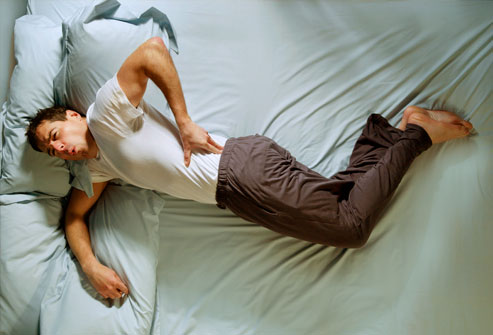Backaches
Waterbed Facts - Backaches
Statistics tell us that more working days are lost through back complaints than from other illnesses and strikes put together. It is likely that over 90 percent of us will at some stage of our adult life suffer from discomfort with our backs due to disease, injury or strain.
The area of the spine most susceptible to damage is the lumbar region or lower curve of the back where most movement occurs. In addition, the muscles in this region use the spinal bones as a fulcrum to stabilise the body during all movements of the upper trunk, arms and head.
The spinal column is made up of 32 small bones or vertebrae which together form four curves: cervical, thoracic, lumber and sacral. The spine is curved in this way to allow us to stand upright and maintain our balance. The individual vertebrae connected by tiny ligaments, with the movement produced by many muscles ranging from small interconnecting ones to the extremely strong larger back muscles.
There must always be a degree of tonicity in the muscles of the spine to maintain and protect the curvature of the back. This applies particularly when in a lying position as gravity creates a downward force putting extra strain upon the ligaments.
This is exaggerated on a soft or sagging mattress and often results in the sleeper waking with a recurring back-ache. A firm mattress will maintain the correct posture of the spine but concentrates the body weight over small areas, therefore increasing the pressure on the skin. At the same time, no direct support is offered to the lumbar spine, and as pressure will cause the sleeper to turn more frequently during the night, his back will be twisted in order for him to lie comfortably on his side
By contrast, on a water mattress the body is supported naturally by the buoyancy properties of water, and occurs because the specific gravity of the two masses is virtually identical: a phenomena which cannot be attributed to any other sleeping surface which all work by compression of the contained substances.
On a waterbed the body floats, with the lower curves displacing water into the upper curves so supporting the body evenly along its length. The water in turn exerts an equal and even pressure upon the body relieving the muscles to such an extent that it could be said that the only time the spinal musculature can truly relax is on a water mattress.
In effect a waterbed will always take the shape of a person who is lying on it, regardless of their size or position: in side-lying the hips and shoulders sink evenly into the water which rises to support the waist-curve preventing rotation of the shoulders which causes an unnatural twisting of the spine.
Back-ache is a very general term used to describe any number of acute spinal conditions such as ... spondilitus, severe ailments like osteo-arthritis or trauma resulting in nerve compression. Often a chronic condition in itself - a general low back pain caused by strained muscles going into spasm - back-ache can be continually aggravated by working conditions involving lifting or twisting or simply by a persons posture or driving position. Muscles going into spasm tighten up and 'lock' causing a painful build up of toxins in the blood vessels.
A bed which gives inadequate support will offer no relief for these symptoms while the total even support of a water mattress combined with the gentle warmth of the water will relieve pain and discomfort. Heat is used as a basis of many medical treatments: It stimulates the circulation which increases the blood supply to the area and flushes out the toxins from the muscle cells so relieving the spasm. Heat, comfort and relaxation are necessary in all preliminary back care which in effect is exactly what a waterbed offers: guaranteed comfort and eight hours of therapy every night
* Gillian Whitehead is a fully qualified physiotherapist. She has had several years experience in the waterbed industry with particular responsibility for hospitals and nursing homes.


